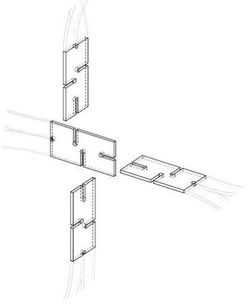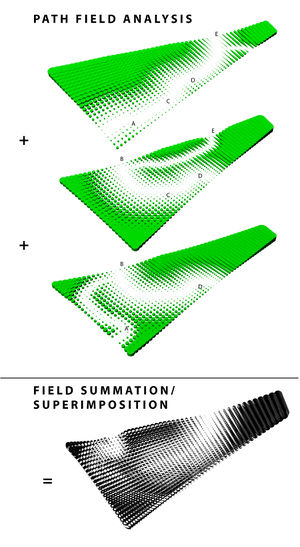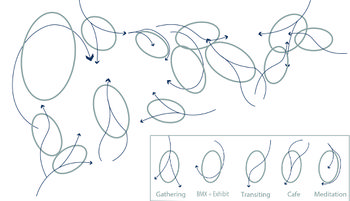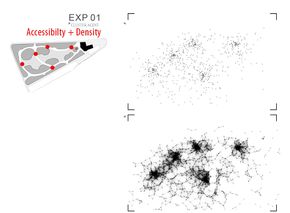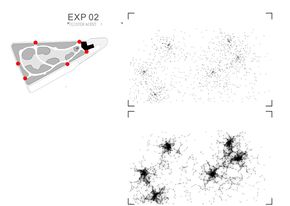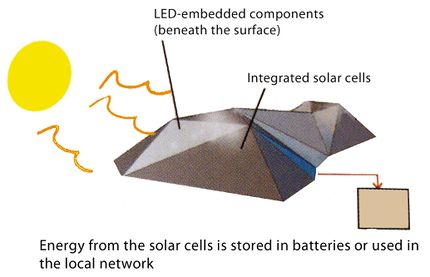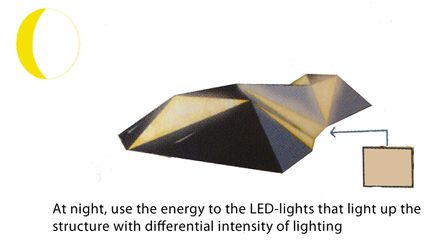project H:Home
Contents |
BRIEF
This project indicates a dynamic way of expanding from a flat surface into a fabricated system. The whole system shows different situations of density, which forms various spaces inside and outside. This dynamic system includes, components, skins and structures, and illustrates a smooth change in the fabrication of architecture. Users would treat this not only as constructed object but also as an integral enhancement of the site. Our concept "Symbiosis" in a way reflects this very phenomenon.
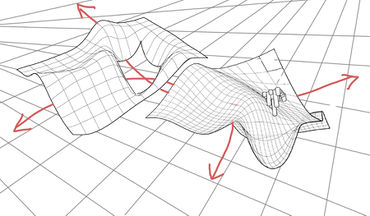 This project begins with an investigation into topological surfaces, different modules will be developed that could function both as surface and structure. The developed modules will allow for numerous connection combinations which enables behavioral characteristics within the system including, bending, torquing, flipping, splitting, and lifting by alternating component connections/ units and scale in order to adapt to various site parameters like user density, sun, wind, precipitation and noise. At some parts components morph into flat panels which merge with the ground. This will allow the system to act both as floor, wall, and roof, while blurring the lines between these conditions.
This project begins with an investigation into topological surfaces, different modules will be developed that could function both as surface and structure. The developed modules will allow for numerous connection combinations which enables behavioral characteristics within the system including, bending, torquing, flipping, splitting, and lifting by alternating component connections/ units and scale in order to adapt to various site parameters like user density, sun, wind, precipitation and noise. At some parts components morph into flat panels which merge with the ground. This will allow the system to act both as floor, wall, and roof, while blurring the lines between these conditions.
INTERVENTION
Our intervention will be a path through the park linking different uses. These uses will be walking, cycling, skateboarding, lounge area’s indoors and outdoors. This path will be a three-dimensional spatial structure that is shaped/molded/wrapped/warped according to the use. The structure will be interactive with its environment and its users. The primary task of such a structure as providing a sense of semi-enclosed space for people, alone or in groups, to feel comfortable while sitting, eating, transiting, conversing and/or reading along it.
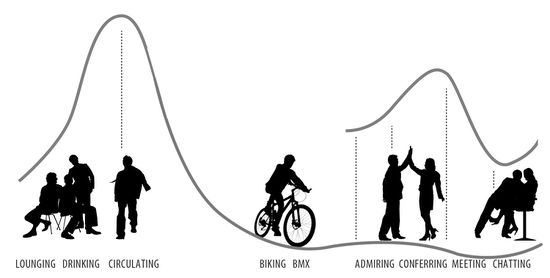 Linkages are conceived to allow for almost constant spatial experience when switching from one path to another. The user is in a state of constant arrival to the same destination repeatedly and this view is mediated and controlled by the imposed view angle of the space, enclosure, openings and speed of motion. While performing the intervention, we need to take into account few other factors as well, like:
Linkages are conceived to allow for almost constant spatial experience when switching from one path to another. The user is in a state of constant arrival to the same destination repeatedly and this view is mediated and controlled by the imposed view angle of the space, enclosure, openings and speed of motion. While performing the intervention, we need to take into account few other factors as well, like:
[exploring the design, rules and functioning of a multi component system in detail]
[exploring temporal structures]
[creating a place of linkage within the urban void]
[instrument for activating the present landscape]
[material/component re-usability or extension after completion of structure's life cycle]
DESIGN SYNTHESIS
A research will be carried out exploring the idea of modulating differentiated external forces like light, sound, wind into a space. The process of pattern making, through an exploration in geometry, will be of particular interest during the initial steps of the design process.
Exploration will begin with a series of physical experiments into simple sheets of paper. In further development to understand and rationalize the surface experiments into a built-able structural component. Through a parametric model the analysis of the surface geometry will be done and generated data will be used to carry out the structural maneuvers.
For example, connecting two components by length would create an internal stress which would add to structural stability and control the amount of opening of each cell, orientation and global geometry.
SITE PATH CIRCULATION ANALYSIS
This field will provide us with representational particles that might be the building blocks of our structure. These representational particles might be further developed by analyzing their density to observe their transitional behavior or by linking the particles together to produce a series of parallel strands and thus construct a relationship between the generated pattern and topographic condition.
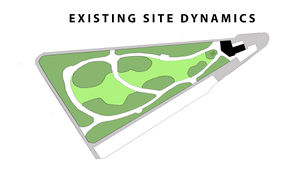
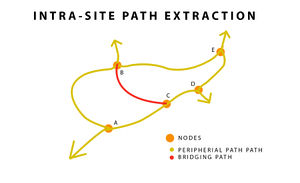
Here different possible paths through the existing site are considered as attractors and thus create a field around it. All these separate path fields are then taken and superimposed on one another to extract a differential spatial conditions depending on the varying degrees of concentration of usage and accessibility. This will help in the organization of various functions and zoning the site in the most logical way. The Circulation study is based on programmatic functions such as; Gathering Area, Café, Transit linkages, BMX, Meditation and Exhibit.
SPACE QUALITIES
Which is the appropriate position for each use/function?
Which use is placed high and which one lower?
Which use is visible and which one is hidden?
Which use can be indoor and which one outdoor? or semi-open?
Which part of the space is only for pedestrians, only for bikes-skateboards and where they can coexist?
Which functions are autonomous and which one can interact with the others?
PARTI DIAGRAMS
Circulation studies where then applied to the spatial condition which then shifts and rotate the spaces accordingly, thus giving rise to various parti diagrams. The information gathered from site analysis was used as feedback.
</div>
PROGRAMMATIC DISPERSION
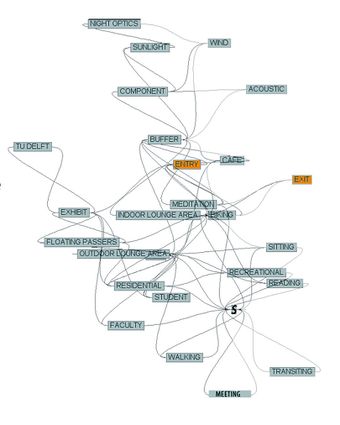 The diagram reviews the possible distribution of different functions according to the gradation of publicity and the
tendency either to activity or infrastructure part of the building’s programme. The diagram verifes
the difference
between the
circulation patterns of
diverse user groups.
The diagram reviews the possible distribution of different functions according to the gradation of publicity and the
tendency either to activity or infrastructure part of the building’s programme. The diagram verifes
the difference
between the
circulation patterns of
diverse user groups.
FORCE FIELD CONFIGURATION
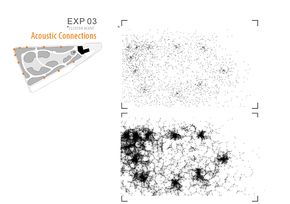
Based on parameter configuration setting, we are drawing different spheres representing amount of acoustic, density, etc. These can be seen as the attractor or repellent points within a force field for the particles.

